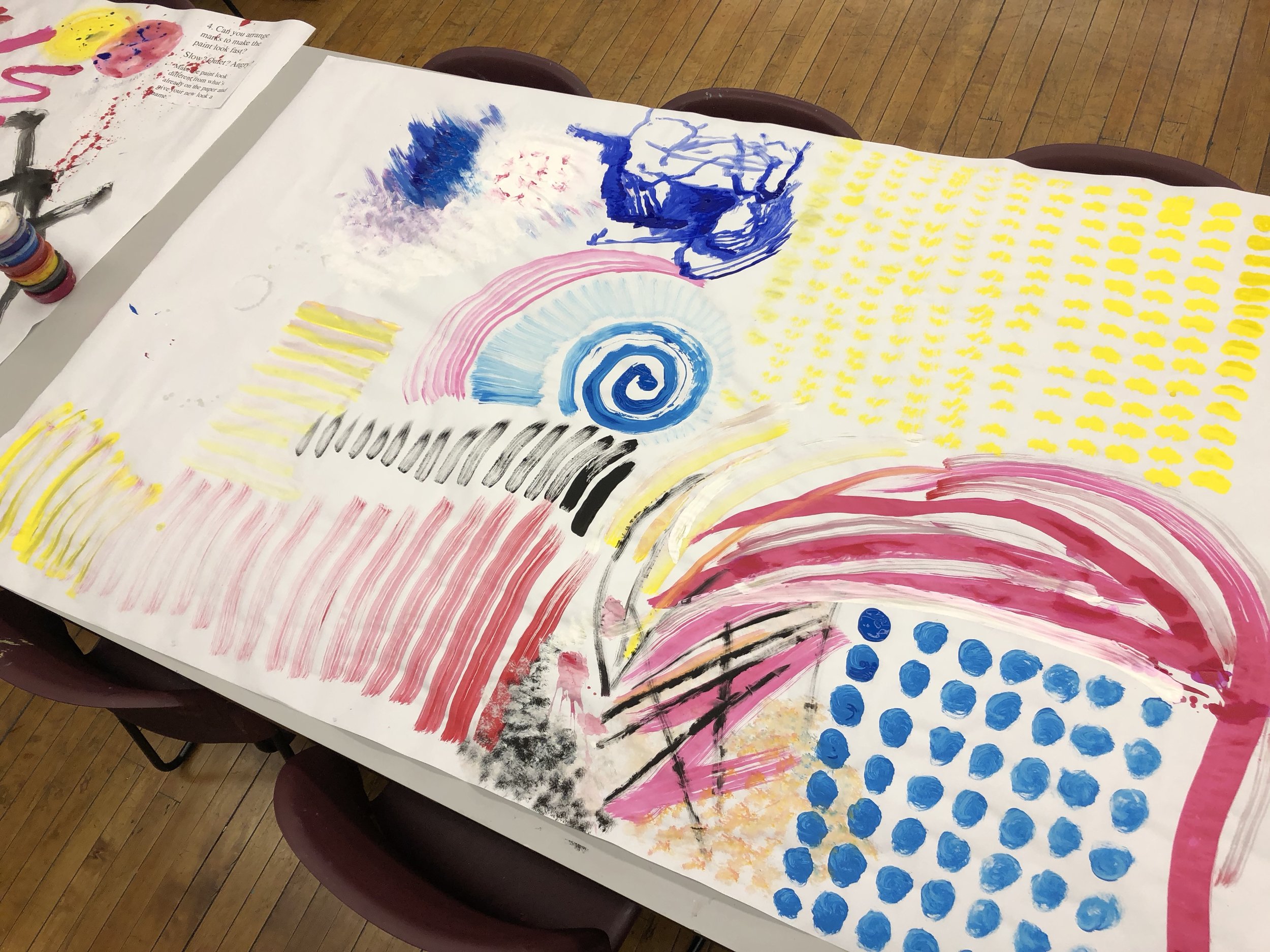Class Notes:
During class, we discussed the best ways to teach painting in the classroom. Before students are assigned a painting project, it is good to keep in mind that all students will be in different phases of their artistic development so they must do painting explorations that will add the same basic skills to their repertoire. We did some of these explorations during class, which are pictured below.
We also discussed how, as teachers, we could organize materials for painting. First, we discusses how these materials can be organized. In this case, we used tempera paint for our exploration. These paints, in particular, can be organized in plastic or simple containers like the ones pictured. It should also be mentioned that tempera paint is considered the "gateway" paint to other painting mediums. It is because of it's easy to use, non toxic, and water based qualities. While the material is thick looking, it is easy to manipulate with a brush. Tempera paint also dries quickly which is also helpful when working in a small period of time so students can go back into their work the next day. It is helpful to have these main colors in your classroom: white, yellow, blue, red, teal, pink/magenta, and black. Although, I would personally advise students to stay away from black because it "sucks the color" out of other colors. I would also make students aware of the "dulling" quality that white has on other colors when mixing.
Second, we discussed what kinds of brushes to have at our disposal. It was recommended to us that we use natural bristles. There are two types of bristles (sometimes called filaments), natural and synthetic. Natural bristles are made from some sort of animal hair, such as hog or badger. Synthetic bristles are often made from nylon, polyester, or a combination of both. Using natural bristles in the classroom is helpful because it is easier to lay down paint on a surface and adds more dimension to the brush strokes. It is also helpful to have multiple sizes of brushes and lengths of brushes. The kinds of brushes you should have are: two flat brushes (.5 inch and 1 inch), one round brush, and two flat generic brushes you can find in any store (1 inch and 1.5 inches).
Lastly, we talked about the supplemental tools that students will need for painting such as something to clean their brush and a container for water (unless you are using oil paints, in which case a container for terpenoid). A useful tool that could be used to clean brushes is a sponge. To save money and resources, you can cut the sponge in half. Some teachers also use paper towels or rags to clean brushes. All of these items can be contained in one tray. As an art teacher, it is useful to become friends with custodians and people who work in the cafeteria, since they can help you manage your classroom. You can find trays to organize your materials if there are old ones in the cafeteria that aren't being used.
In addition to the materials listed above, we also had the chance to use palm sized brushes. These brushes offer more control and are also helpful for students with disabilities who have trouble painting. We also used a brand of water color, in a liquid form to experiment with it compared to the tempera paint.
Below are pictures of my class's material exploration of tempera paint with the prompt question:






Class Notes:
After the painting explorations dried, we revisited them to speak about the process we went through when we used the material. We talked about the kinds of tones and messages that are created when certain marks are made. In Exploration 1, there was a distinction between the marks that were made to look softer and calming versus deliberate and fast. It was also noted that there is a difference between the kinds of colors that were used. Some colors pushed forward while others looked like they retreated. In Exploration 5, we discussed which colors go well together, contrast each other, and look on certain color bases.
Revisiting the explorations helped us in our next painting activity. We applied our new knowledge of painting techniques and applied it to painting music. We discovered that elements in music can be translated visually with different kinds of strokes, contrast, and color. There are many artists that have done this kind of exercise like, Kandinsky. The class listened to a number of songs from different genres, mostly instrumental, and painted what we heard.
Below are pictures of the music inspired paintings that my class completed for homework:










Although this music video is not exactly the painting exercise that we did in class, I think that it is a good example of merging the two artistic disciplines in modern entertainment.


